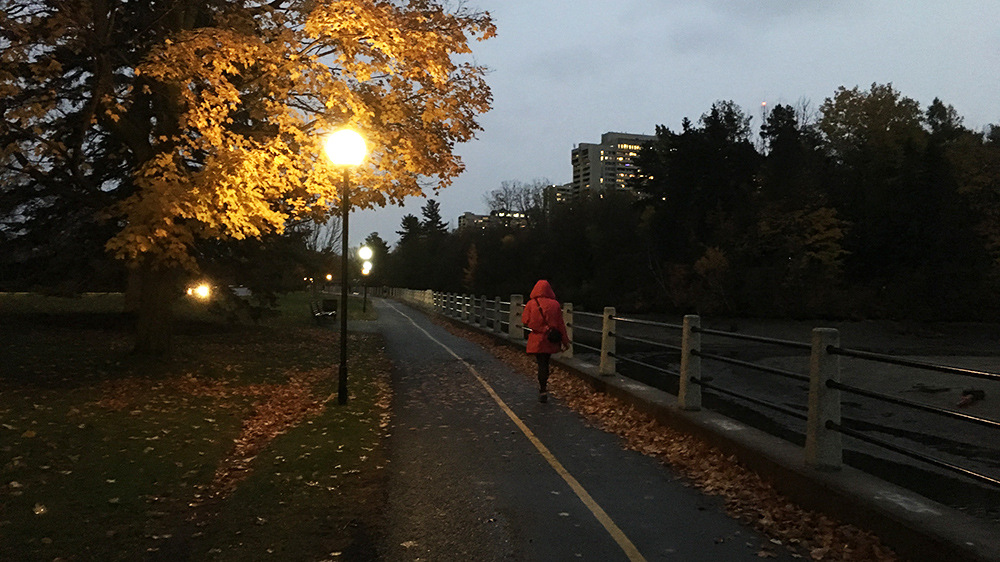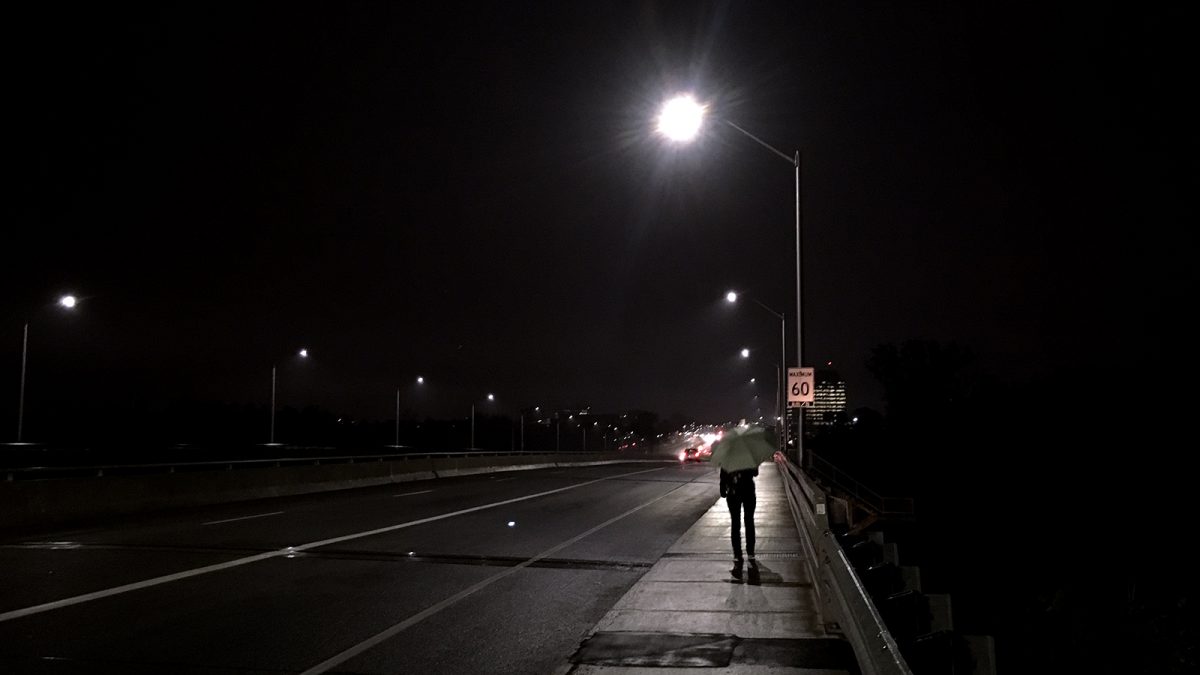By Hannah Kilby, David Sagolj, Louisa Simmons
When night falls in Ottawa the street lights turn on and now most of them are a much brighter white.
The City of Ottawa is partnering with Envari (a business affiliate of Hydro Ottawa) to convert 58,000 street lights to energy-saving light-emitting diode (LED) technology by 2020. While the project is well underway, there are concerns that the blue-white light produced by the LEDs is not the right choice to illuminate the city.
The LED lights will replace less efficient high pressure sodium (HPS) and metal halide lights.
Adnan Khokhar, chief energy and infrastructure services officer for Envari, says that they are on track to complete the LED conversion on time. “I’d say 55 to 60 per cent of our lights are now converted,” he says. “The city’s happy … with the maintenance. They’re very happy with the conversion total.”
According to a report by Envari, the project will reduce the annual cost to operate and maintain city street lights by $5 million. It will also reduce the amount of energy required to operate the lights by 60 per cent, reducing the city’s carbon footprint by more than 1,000 metric tonnes of carbon dioxide every year.
Vi Bui is the Managing Director for Ecology Ottawa, a non-profit organization concerned about climate change and sustainable communities. She says that the organization is “supportive of any initiatives the city takes to reduce greenhouse gas emissions.”
In addition to energy savings, LEDs significantly reduce the city’s electricity costs. In a 2015 pilot project on Carling Avenue, the city managed to shave $72,000 from its annual electricity bill.
According to an analysis by Capital Current, LEDs are expected to last 17 years if running 12 hours each night, whereas HPS bulbs would only last about four and a half years, and metal halide bulbs only about three years.
As more streetlights are converted to LED the city saves consistently more on the costs to illuminate them, but also in the costs to maintain them. Some of the maintenance savings come from the reduced materials required, as the LED bulbs outlive their counterparts significantly, but also in the labour charges associated with sending crews to change bulbs once they die.
Mayor Jim Watson has said in a media release that he is “thrilled that the city is able to reduce its energy consumption and costs,” but others, like Robert Dick, say that the bright white LEDs have some potentially adverse effects.
Dick is the president of the Canadian Scotobiology Group, and the CEO of The Canadian Lighting Company. He says that warmer LEDs could alleviate the impact of white light.
“The mantra of the industry is really for bright and white [light],” Dick says. “Once you get away from that … you can have considerable savings and also a reduction in the ecological impact and the impact on human health.”
Bright white lights, Dick says, are created by mixing yellow and blue light. The blue component is what can be harmful.
When it gets dark the body releases hormones that fight infection and disease, and store or forget the day.
“If you have bright light throughout the night, and particularly blue light, then the hormones that do all these rejuvenating tasks are suppressed,” Dick said.
He says that white light also has a negative effect on drivers. While the white light allows people to react faster on the road because it stimulates the brain to be more alert, white light also illuminates distractions. “The intensity, the brightness of the light … illuminates so many distractions, and that’s what causes accidents,” he says. Although drivers will react faster to road hazards, Dick says, distractions could divert drivers’s attention from the road.

The City of Ottawa is using slightly more yellow LEDs registering at 3000 Kelvin on the colour temperature scale in residential areas, while arterial roads use more blue 4000 Kelvin LEDs.
Dick says, “what the city asks is that the consulting company [selects] and designs the lighting system with white light,” which limits their choices. He says that there are LEDs that can imitate older, yellower lights better than the current ones, but to do that the city would have to rethink its lighting strategy and replace its lights again.
While Dick says he thinks the city could choose better LEDs, he says the conversion project is a step in the right direction: “I believe from the studies and the work I’ve done, LEDs are the future.”





it’s a known fact that those hps systems cause severe depression through s.a.d.the lights now are optimal please don’t change them they are great a a close temp. of 5000k.
I beg to differ. Those lights will not help SAD and they are much too bright, almost blinding. They are creating much more light pollution than the older Halide lights and negatively affecting not only humans but insects and birds. It is not natural to have such bright lights shining all throughout the night. I hope that the designers bring back the relaxed, more aesthetic glow of the Halide lights but with the efficiency of LED. I’m a light sensitive and sound sensitive person and those lights are jarring, blinding and extremely irritating.
While I appreciate this article for its health concerns, there are also concerns for safety.
People are inclined to believe that “more bright light is more safe”. Yet this is a *false* sense of security.
Brighter lights create deeper, darker, hard shadows for criminals to lurk and hide or disappear in.
Light that is perceived to be lower level, yellow light helps to remove the deep hard shadows and allow us to see deeper into the shadows under trees and around areas. They provide less hiding locations.
Prior to light changes I felt secure walking the neighbourhood after dark. With the conversion in most of my community now I feel I am limited to the center of the road “bright zone” where I become essentially night blind and I can no longer see when someone approaches from their home to take out garbage as I used to (and thus I am startled!)
Imagine if it was someone wishing me harm!?
Brighter light also supports the criminal providing greater light to work faster by as they break-in to cars or smash the car window and steal belongings or break-in homes.
I wish Ottawa would consider more yellow LED streetlights or installing a yellow – orange cover over the street lights. The few blocks still with the old yellow – orange lights I can see into the depths and feel much more secure knowing that no one can hide or sneak up on me there.